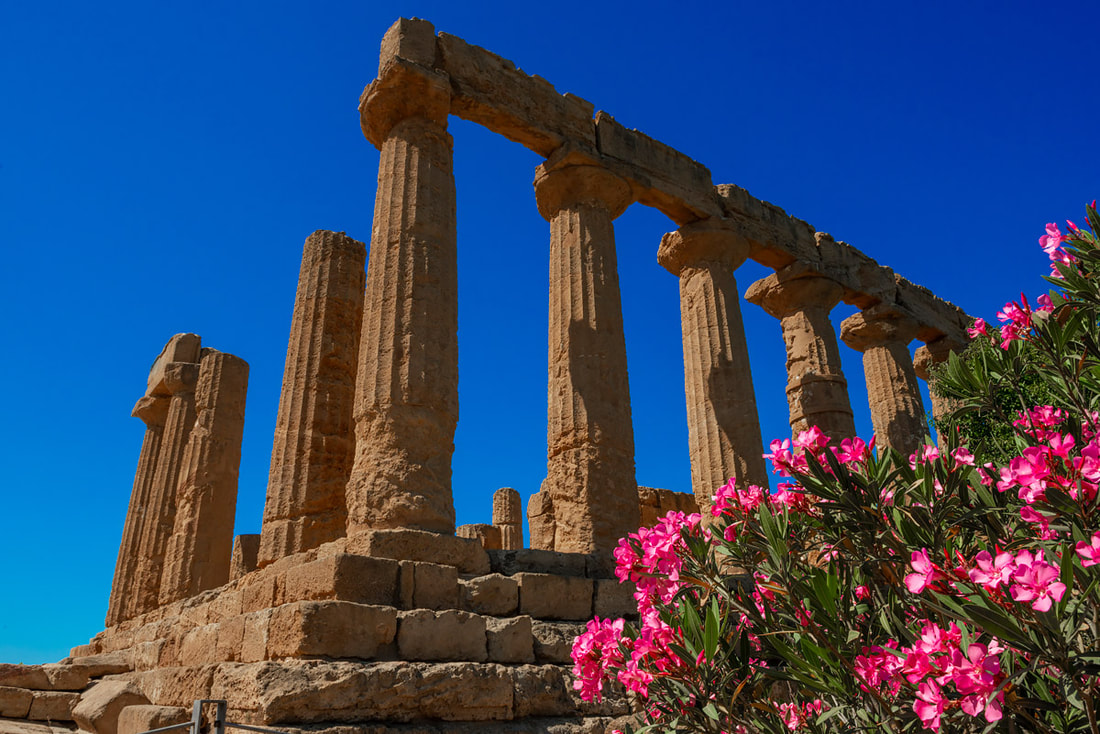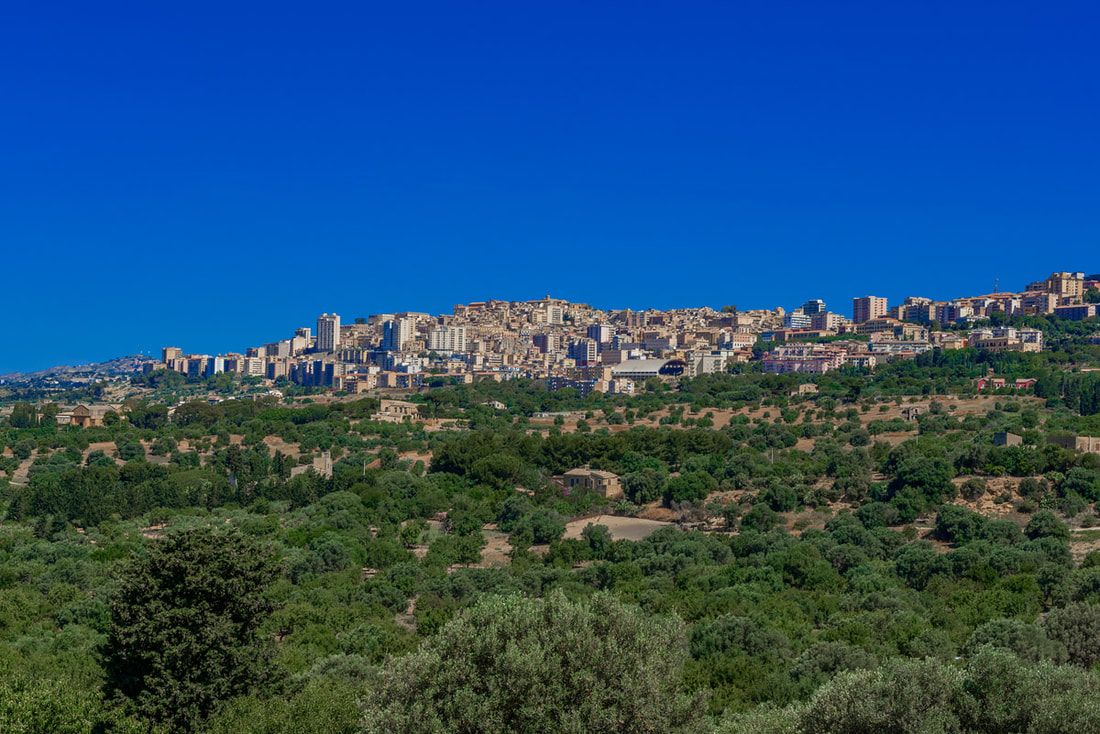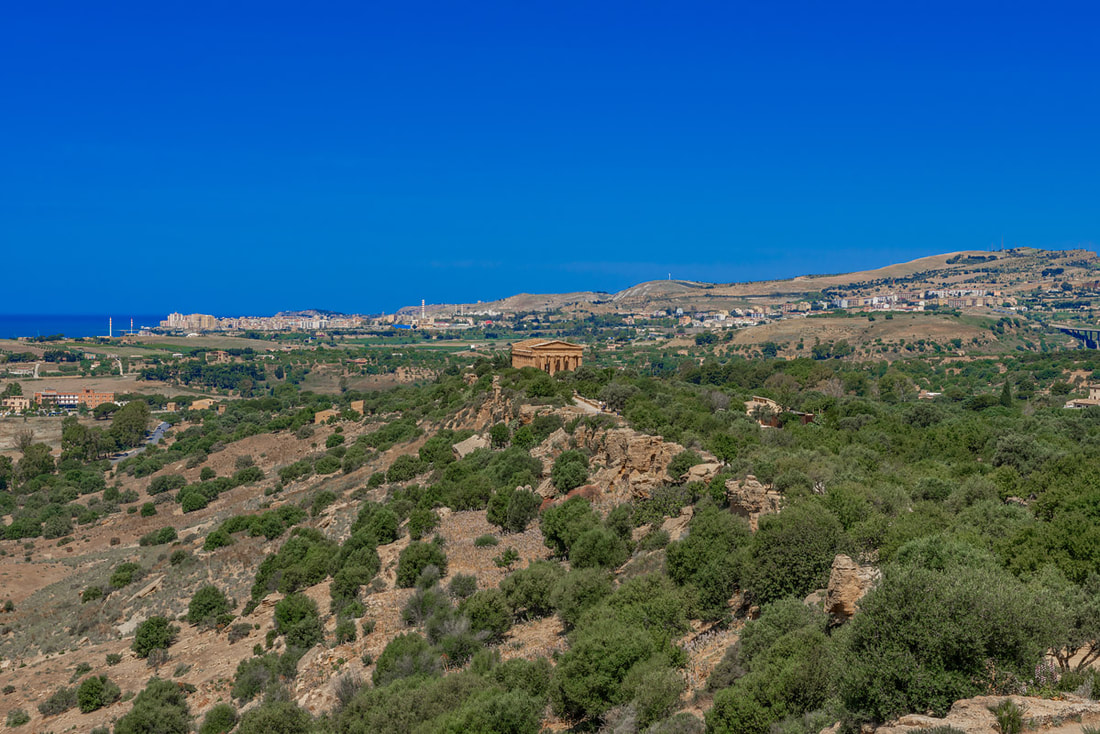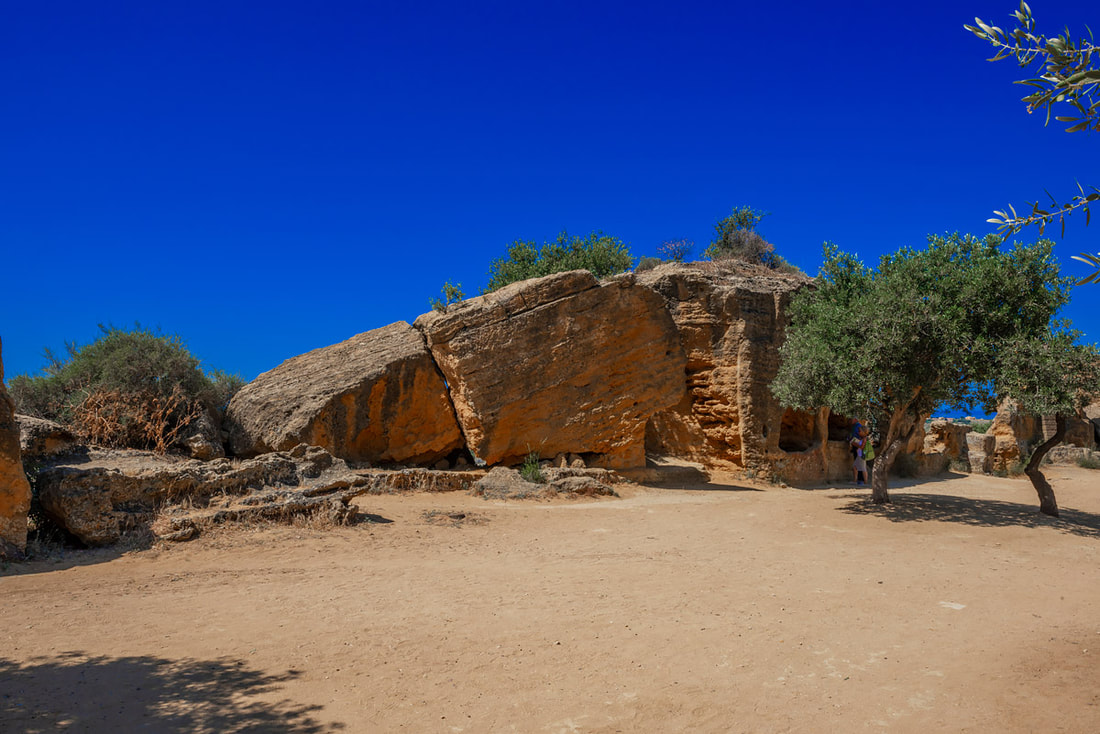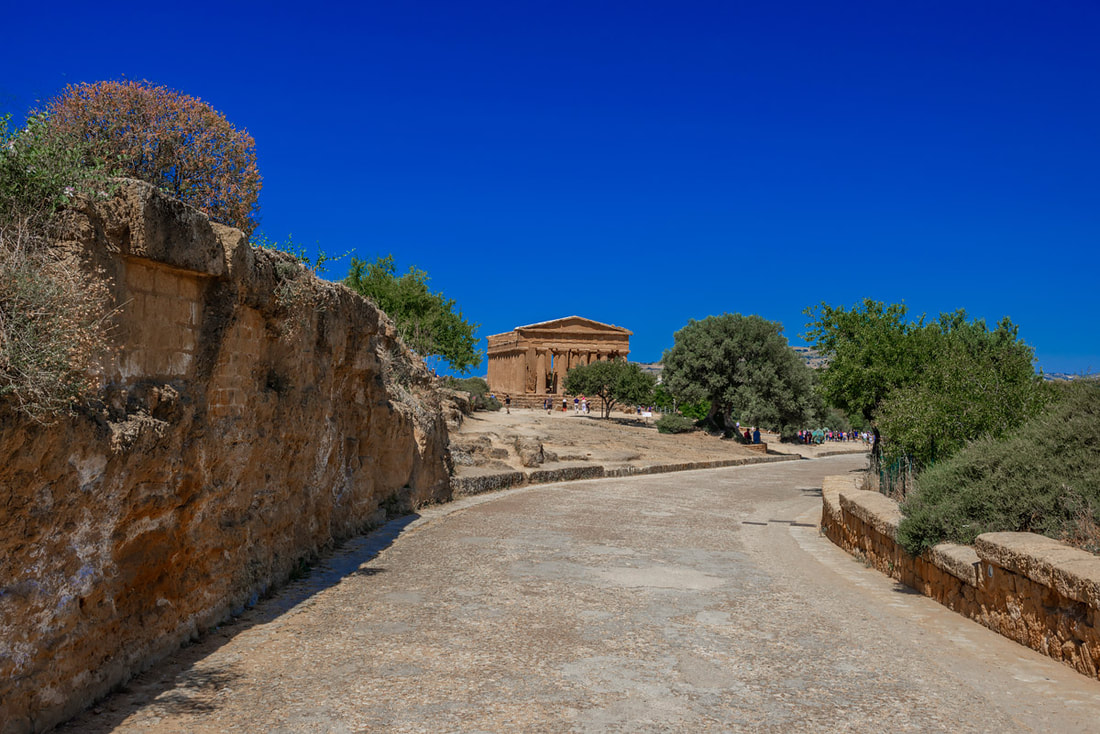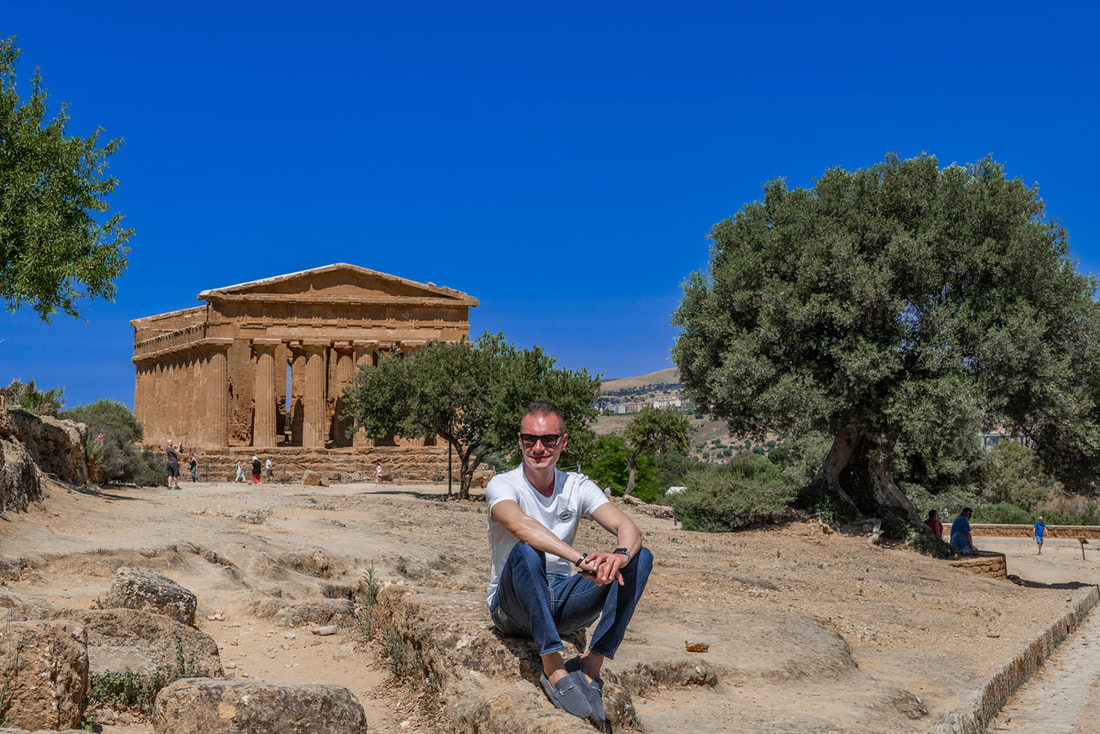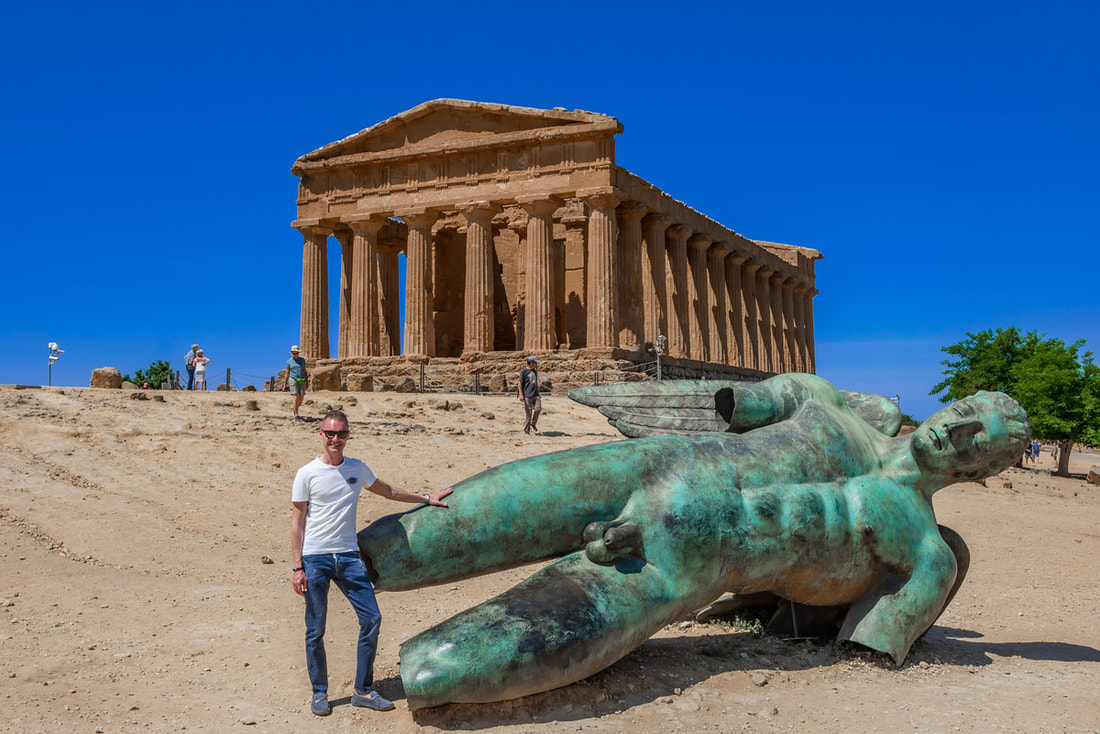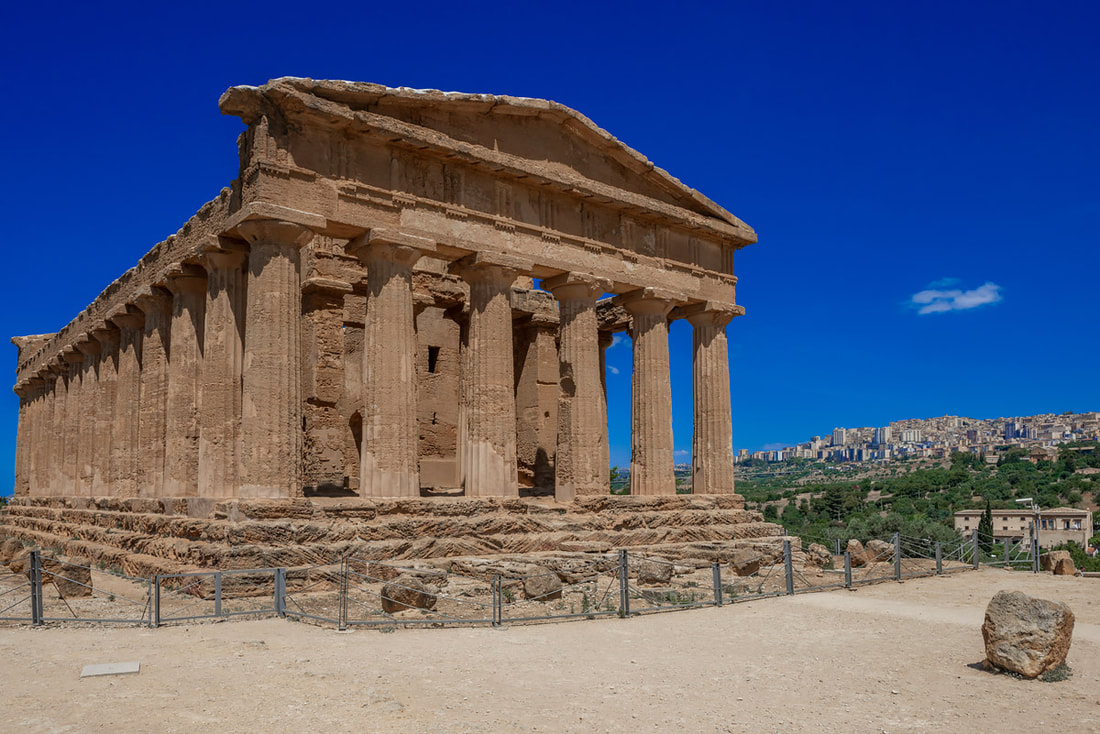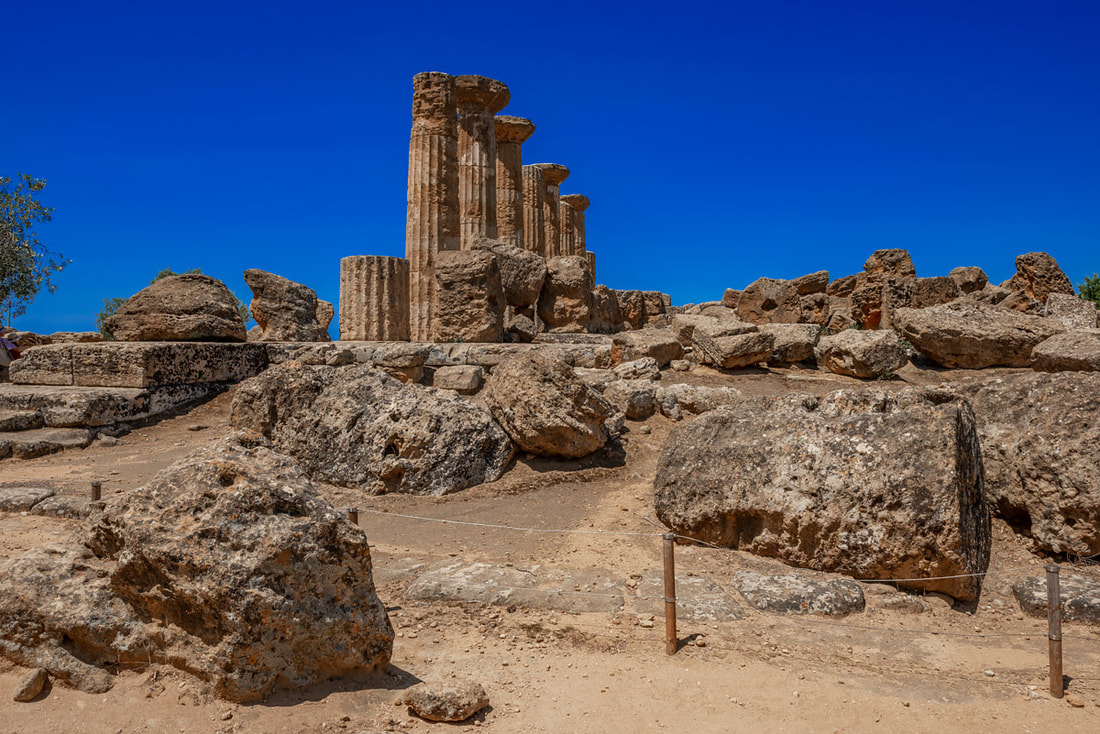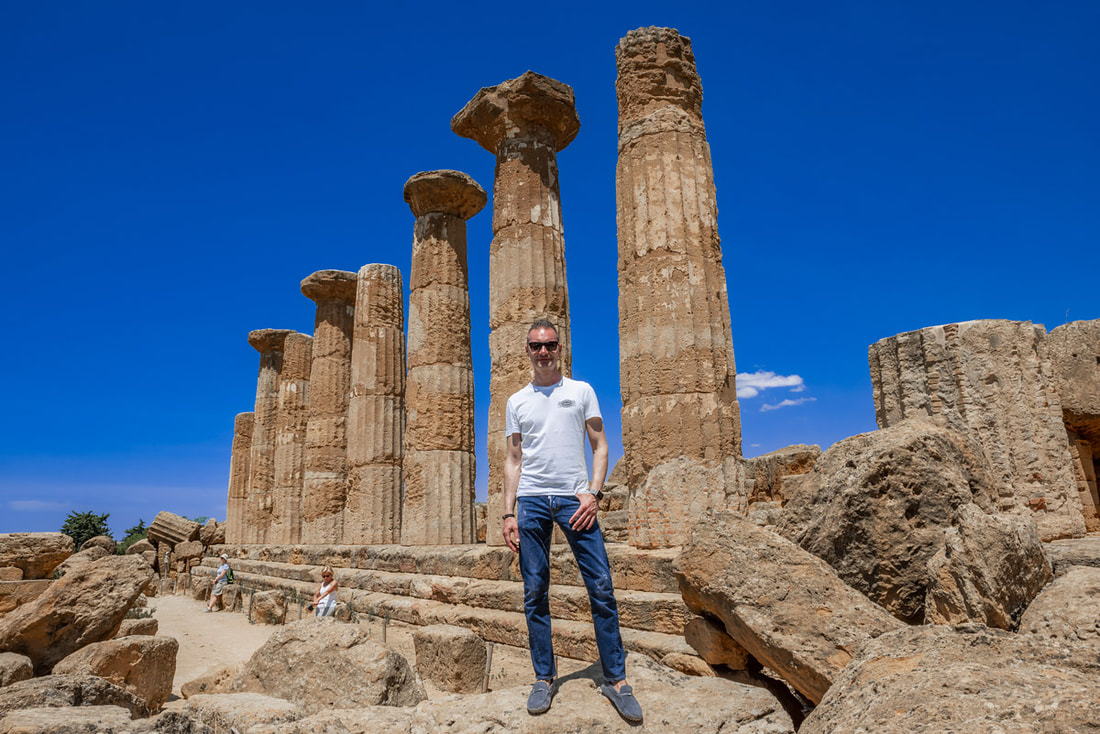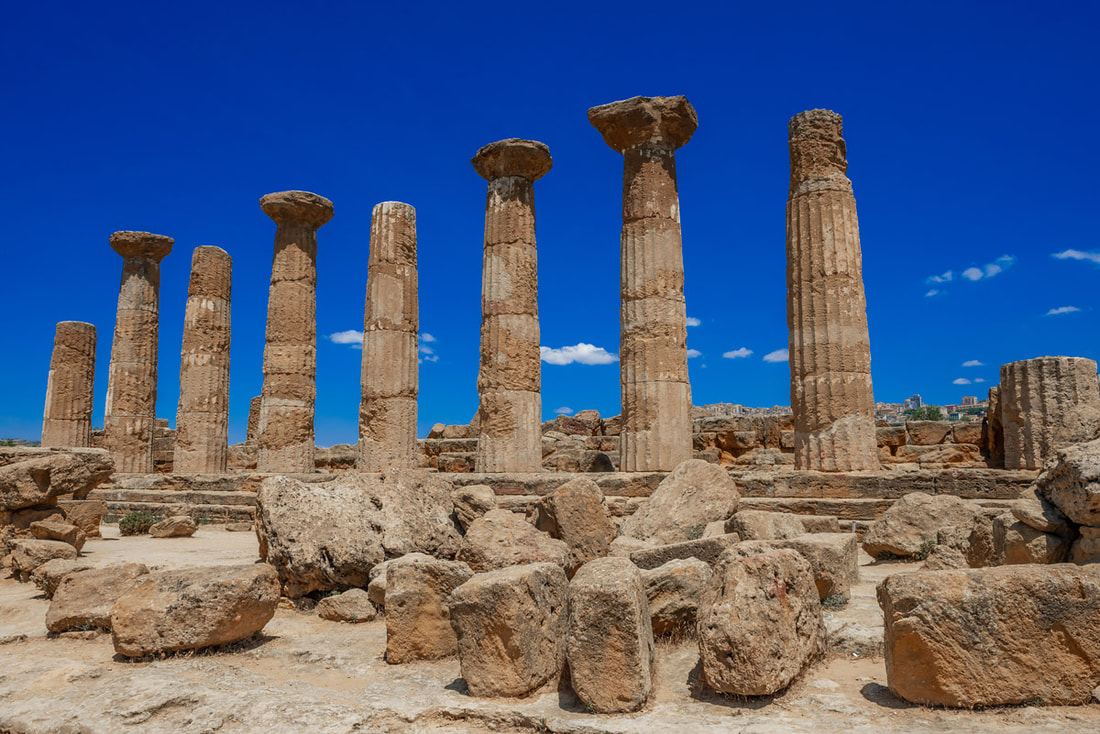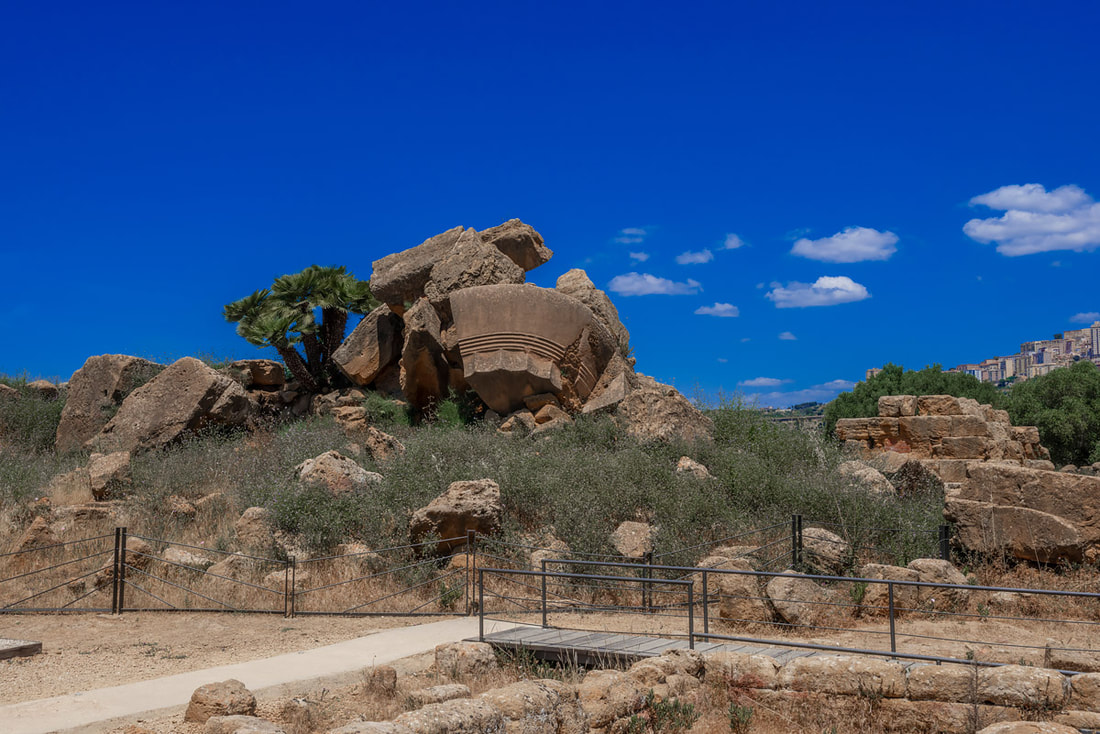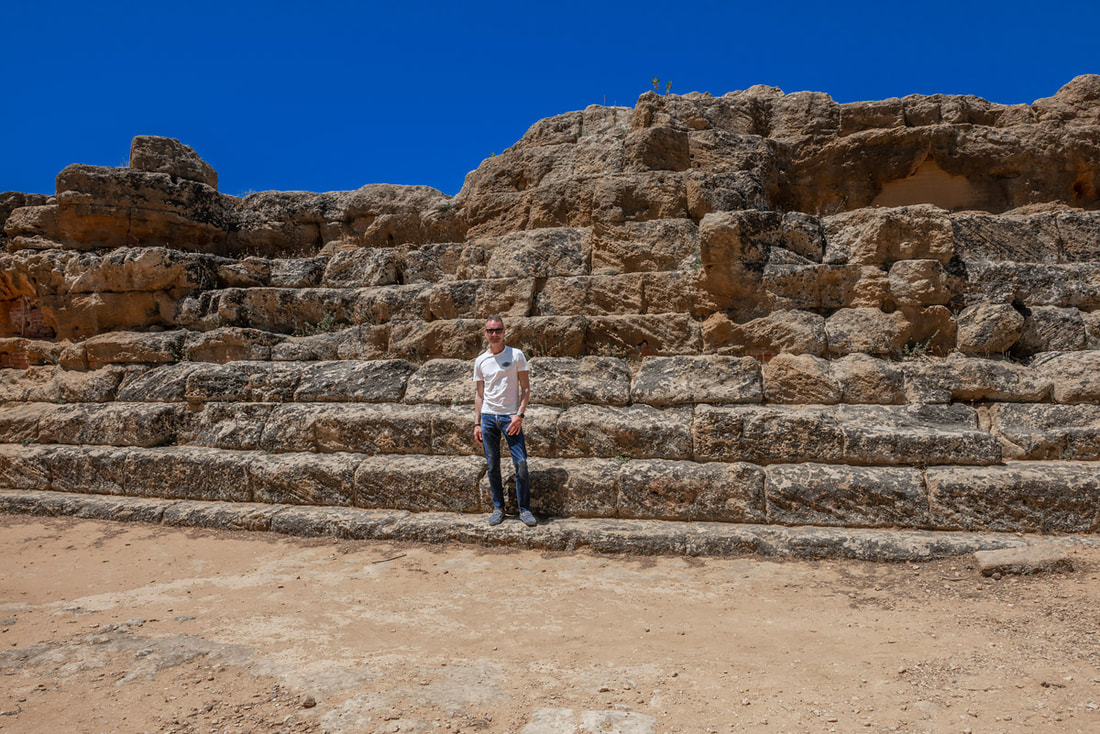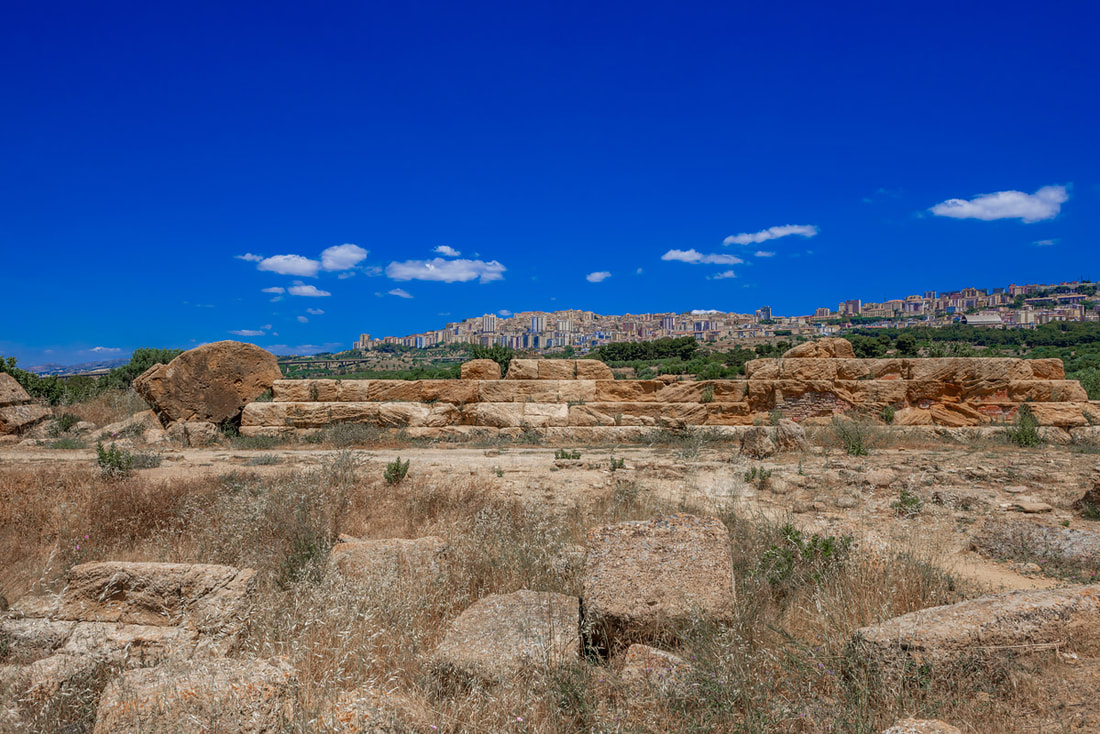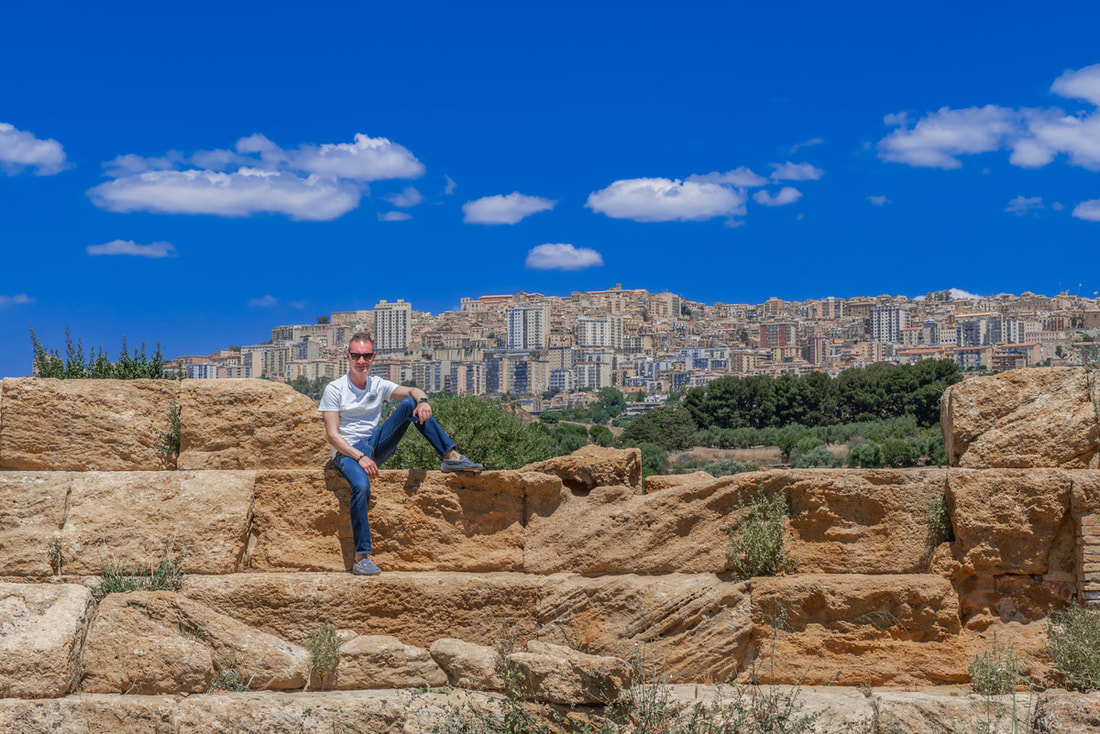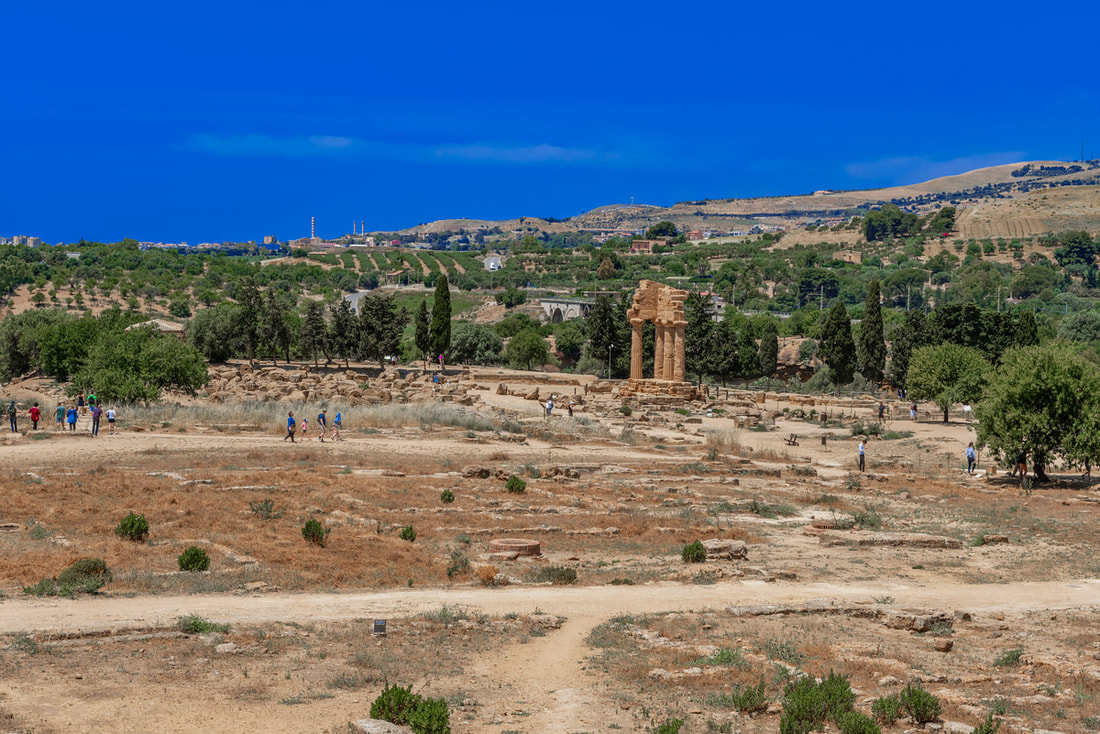By Antonio MalaraThe weekend in Agrigento to visit “Valle dei Templi” was one of the stops that led me and a friend of mine to visit different places in Sicily in May 2017. The first of these events was the Ventura Resort, where we attended the “Rocco Forte Open” golf tournament and which I described in this post here. The adventure then began from the resort that was located near the city of Sciacca, from there the journey to the center of Agrigento lasted about an hour. I had never visited “Valle dei Templi” and since that year I also wanted to visit Athens, it would have been a sacrilege to see the Greek temples before the Sicilian ones. We arrived in town when it was almost dinner time, after having taken the b&b we immediately went out through the streets of the center. I had never even been to the historic center of Agrigento, a very nice place full of friendly people, after visiting the Duomo we stopped in a very characteristic restaurant because it was on the first floor of an ancient building, one of those with high walls . That evening we limited ourselves to walking, the visit to the Valle dei Templi first and then Scala dei Turchi, were scheduled for the day after which in fact also sanctioned the end of the weekend. After the two visits, in fact, we would back home in the late evening. The next day, before 10 am, we entered the large parking lot near the entrance named “Porta V”. The archaeological park had two entrances; the one just mentioned is that of “Tempio di Giunone” which was located at the other end. We opted for the latter because by doing so we would have visited the large park starting from the top and going down the rest of the road. To reach the entrance we used a shuttle but to be honest I don't remember if it was free or if it had a symbolic price of a few euros. We entered the archeological park around 10 AM and to reach “Tempio di Giunone” we walked an uphill path which was surrounded by olive trees. The Temple was on a promontory from where we could see both the sea and the city of Agrigento and was, let's say, enclosed by low iron protections. The temple had almost all the columns even if some were whole and others partial but in general it made a good impression. On the right side there was also the almost complete architrave and probably its beauty was also due to the position as well as to the conservation of the structure itself. The most beautiful view of the temple was the perspective from the left side, from there, in fact, the work could be perceived in all its depth, giving a very beautiful 3D effect. However, turning around the structure, the view was opened on the whole valley, where in the distance we could also see “Tempio della Concordia”. This was certainly the most beautiful vantage point because it dominated everything, both the sea side and the mountain side. After the photos we began the descent along the valley that took us on the long road that divided the olive groves and arrived at “Tempio della Concordia”. Along the way we stopped to explore a part full of ancient remains. Some looked like tombs but other remains formed by large walls with large arched openings, I believe they were related to houses. However, the beauty of the place was also given by view over the sea. Before 11 AM we arrived near “Tempio della Concordia” and I stopped there to take some "deceptive" photos. It involved taking zoomed photos, in such a way as to enlarge the temple behind the subject and create an impact perspective that was not real. In other words, the photos altered what the view was, it's something I always do if the place allows it. “Tempio della Concordia” was a real beauty because it was practically very well preserved. The colonnade, the architraves and also the internal divisions, looking at it, seemed a perfect structure only without the roof. My childish spirit, however, was more attracted to the statue of “Icaro Caduto”, which was located in the lower right part before arriving at the Temple. The statue represented the fallen Icarus and placed horizontally on the ground, was much larger than I thought. Plus the perfection of the mutilated body, combined with the nudity and the size of the genitals, made it a symbol of incredible virility. Obviously it immediately became an object of attention that led me to take a lot of photos. Also, its position allowed for a nice perspective with the temple in the background, a kind of effect that I really like. Like the previous one, this temple was also closed by fences so we limited ourselves to admiring it, turning around its perimeter. We spent almost half an hour at that point which also had a view of the sea even more beautiful than those we had seen before, after the dozens of photos we continued the descent. After passing through “Necropoli Paleocristiana”, where we stayed for a very short time, we headed to “Tempio di Ercole”. This structure immediately fascinated me despite the fact that there was very little left. It was the left colonnade and there were about seven or eight columns. However, the remains of large stone blocks all around gave an incredible sense of history. That place seemed dynamic to me, it gave the sense of a temple that had been there until recently and then had collapsed. This is because it was surrounded by those great ruins, it was like a recent earthquake had happened, a very scenic effect. Moreover, approaching the columns you could perceive the size of the same and created a particular atmosphere. At that point I had a lot of fun taking pictures and playing with the big rocks and the perspectives they created. The Temple of Hercules, despite being represented only by a few columns, had fascinated me more than all the rest. The last two sites we visited were “Tempio di Zeus” and “Tempio dei Dioscuri”. These two sites were downstream and unfortunately there was little left of them. Only one small colonnade, many stone blocks scattered here and there but several suggestive walls. In fact, one of these had in the background the city of Agrigento which stood out on the hill. It was therefore possible to see the ancient walls and the present city where it was also possible to distinguish the historic center from the new buildings. Our visit ended around 12:30 AM, after leaving that part of the site we headed to the refreshment area which was not very close anyway. We had lunch in the restaurant inside the archeological park in order to optimize times because we had another visit in the afternoon. In fact, immediately afterwards we had planned to go and see “Scala dei Turchi” and then return home, so it was important to do everything quickly. In the next post I will talk about this other visit, another singular and suggestive experience. As I said, “Valle dei Templi” was a place I’ve never visited, therefore a place I should have no memory of. Historic places, never particularly fascinated me during my childhood life while instead I discovered their charm only later in time. I remember that it was only when I was ten years old that I developed a strong desire to go to see the Colosseum and my parents made this dream come true in a short time. Today places like “Valle dei Templi” have great power over me and as a person who loves to do analysis, I have not overlooked this detail. I don’t believe in chance or free will, but rather in a design in which everything has already been planned, I place the love for these places within a very specific space of my mind. I have the feeling of having lived in places like this, or Ephesus, places of a very ancient historical period. Visiting these ruins for me is similar to reliving memories, memories that perhaps in myself at the age of seven had not yet been "loaded". If mine is imagination or the capacity of a thought that goes beyond common ones, I don't know. What I do know is that I enjoy exploring these places with this kind of feeling, a very real thing even if only for me. Pictures: Antonio Malara
Camera: Nikon D800
0 Comments
Leave a Reply. |


